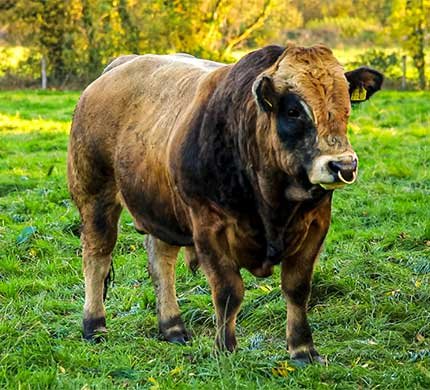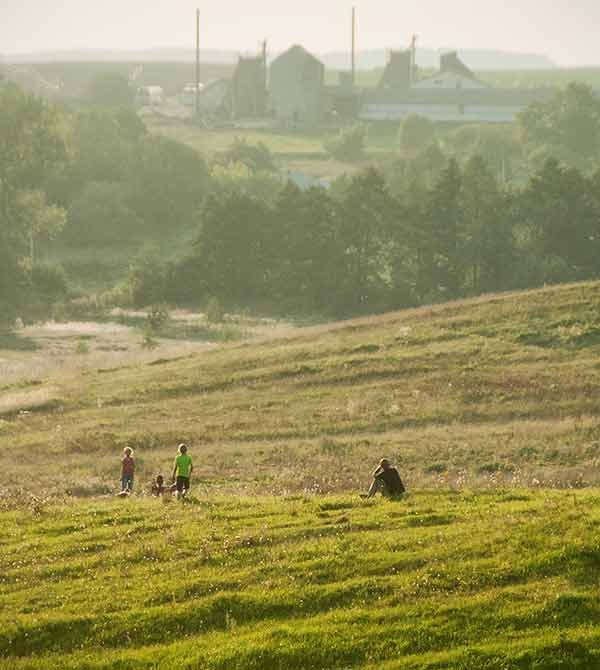Aubrac
- Temperature:Cold and Snowy climate in the winter
- Milk:2,180 kg of milk per lactation
- Food:Grass and hay
- Pregnancy:283 days
- Nationality:France

General Information
Aubrac is a region located in the Massif Central mountain range in southern France. It is known for its traditional cattle farming and rustic cuisine, which is based on local ingredients such as beef, lamb, potatoes, and cheese. The region is particularly famous for its cheese, with Laguiole being the most well-known variety. Aubrac has a cold and snowy climate in the winter, and temperatures can drop below freezing. In the summer, temperatures are milder but can still be cool due to the region’s high altitude. The region has a strong cultural identity, and there is a regional language called Occitan that is spoken by some inhabitants. Overall, Aubrac is a beautiful and unique part of France, with stunning landscapes and a rich cultural heritage.
Where we find this cow to buy?
If you are looking to buy Aubrac beef or dairy products made from Aubrac cow’s milk, there are several options available to you.
One option is to visit local markets or specialty food stores in the Aubrac region or in larger cities in France. Many of these places carry Aubrac beef and dairy products, including cheese, yogurt, and milk.
Another option is to purchase Aubrac beef or dairy products online from retailers that specialize in gourmet or specialty food items. Some online retailers may also offer shipping to international locations.
Finally, you may be able to find Aubrac beef or dairy products at certain restaurants that feature regional or traditional cuisine. You can inquire with the restaurant or look at their menu to see if they offer any dishes made with Aubrac beef or dairy products.
Regardless of where you choose to purchase Aubrac beef or dairy products, be sure to look for reputable sources that prioritize quality and ethical farming practices.

How to increase milk production in Aubrac?
Increasing milk production in Aubrac cows can be achieved through several methods. Here are some possible ways to increase milk production:
01
Providing cows with a balanced and nutritious diet is crucial for milk production. Cows should have access to high-quality forage, such as hay or pasture grass, as well as grain or other concentrates. Consult with a veterinarian or a livestock nutritionist to develop a feeding plan that meets the specific nutritional needs of Aubrac cows.
02
Selecting breeding stock with high milk production potential can help increase milk production in future generations of Aubrac cows. Consult with a breeder or a geneticist to choose the best bulls and cows for breeding.
03
Good management practices, such as maintaining a clean and comfortable environment for cows and providing proper medical care, can also contribute to higher milk production.
04
Milking cows more frequently, such as three times a day instead of twice a day, can increase milk production. However, it is important to balance milking frequency with the cow’s overall health and well-being.
Medicine
Some common types of medicine and treatments that may be used for Aubrac cows include:
01
AntibioticsThese are used to treat bacterial infections, such as mastitis (inflammation of the udder) or respiratory infections.
02
ParasiticidesThese are used to control or eliminate parasites, such as internal worms or external parasites like ticks and lice.
03
VaccinesThese are used to protect cows against various diseases, such as bovine respiratory disease or clostridial diseases.
04
HormonesThese may be used in some cases to regulate reproduction or to increase milk production.
Pregnancy
Like all cattle breeds, Aubrac cows can become pregnant and give birth to calves. The gestation period for cattle is approximately 280 days, or about 9 months. During pregnancy, it is important to provide Aubrac cows with proper nutrition, such as high-quality forage and supplements as needed, to support the health of both the cow and the developing calf.
It is also important to monitor pregnant Aubrac cows for any health issues, such as infections or nutritional deficiencies, and to provide appropriate veterinary care as needed. Regular check-ups with a veterinarian can help ensure that the pregnancy is progressing normally and that any issues are identified and addressed in a timely manner.
When it comes time for the cow to give birth, it is important to provide a clean and comfortable environment for both the cow and the calf. Adequate space, good hygiene, and proper handling are key to ensuring a safe and successful delivery. After the calf is born, it is important to monitor the cow and calf closely for any signs of health issues and to provide appropriate care as needed.
Overall, successful pregnancy and calving in Aubrac cows depend on proper management and care throughout the process, from conception to delivery and beyond. Working with a veterinarian and following best practices for cattle management can help ensure a healthy and successful pregnancy and a strong, thriving calf.
Important!
It’s important to note that the use of medicines in cattle should be done under the guidance of a veterinarian and in accordance with local laws and regulations. Additionally, preventative measures such as good nutrition, proper housing and sanitation, and regular veterinary check-ups can help minimize the need for medications and maintain the health and well-being of Aubrac cattle.
Food
The diet of Aubrac cattle should consist mainly of roughage, which includes grass, hay, and other forages. However, there are different types of food that can be fed to Aubrac cattle to supplement their diet and meet their nutritional needs. Here are some examples:
Aubrac cattle are known for their ability to thrive on a diet of grass. They can graze on a variety of grasses such as ryegrass, timothy, fescue, and clover.
Aubrac cattle can also be fed concentrates such as corn, soybeans, and other grains. These concentrates are high in energy and protein and can help supplement the nutritional needs of the cattle.
Aubrac cattle require essential minerals and vitamins in their diet for healthy growth and development. These can be provided through mineral and vitamin supplements.
Silage is a fermented feed that is made by preserving grass or other forages. Aubrac cattle can be fed silage as a source of roughage, energy, and protein.
Facts
Here are some interesting facts about Aubrac cattle:
Aubrac cattle are a breed of beef cattle that originated in the Aubrac region of southern France.
They are typically medium-sized, with a distinctive red or black coat and white markings on their face and feet.
They are a dual-purpose breed, meaning that they are used for both meat and dairy production.
Aubrac cattle are known for their high-quality beef, which is prized for its tenderness and flavor.
They are also valued for their milk, which is used to make a variety of dairy products, including cheese.
Aubrac cattle are known for their docile temperament, which makes them easy to handle and work with.
They are typically raised in extensive, grass-fed systems, which help to preserve the natural environment.
Aubrac cattle have been exported to a number of countries around the world, including the US, Canada, and Australia.